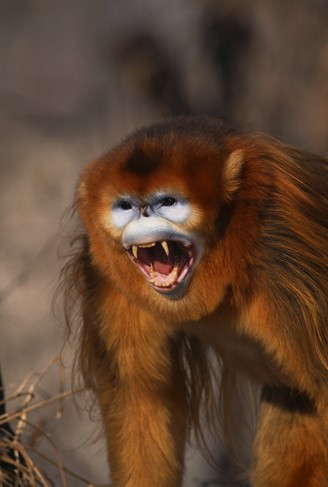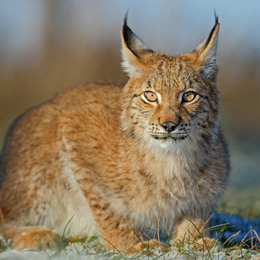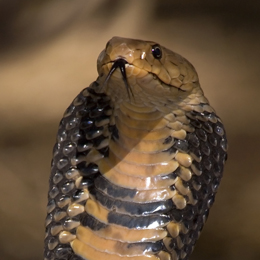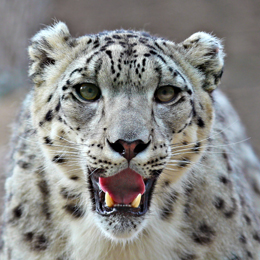Golden snub-nosed monkey
The golden snub-nosed monkey, also known as the Sichuan snub-nosed monkey is a very rare species found only in Central and Southwest China. It can be identified easily by its long golden-brown guard hairs on its back. It has a unique nose that has no protruding nasal bones, giving the species its name.
Though some biologists believe it helps them in avoiding frostbites, the exact reason for this unique feature is still unknown.
Male subadults and adults are quite similar in size, but they can be easily distinguished by the size of their guard hairs. Fully grown adult males have longer guard hairs and more bulk in body mass, as compared to the subadults.
Males of this species are double the size of the females. Adult females also have long guard hairs, while the subadult females are smaller and have shorter hairs.
Very less is known about their exact life span in the wild. However, a golden snub-nosed monkey lives for up to 23-26 years in captivity. A healthy adult male can weigh up to 20 kilograms and a female is up to 14 kilograms; however, their weight changes with respect of the changes in seasons and diet.
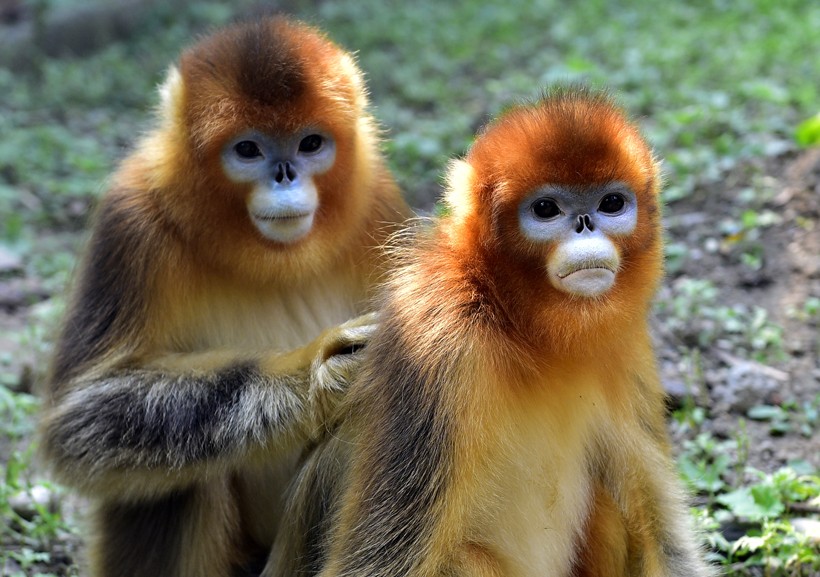
Golden Snub-nosed monkeys delousing eachother
?
Image credits: Wang LiQiang/Shutterstock
Snub-nosed monkeys have a good sense of hearing and smell, but they primarily rely on their vision to understand the surroundings.
There are three subspecies of golden snub-nosed monkeys found only in central and southwest China; they are Moupin golden snub-nosed monkey, Hubei golden snub-nosed monkey and Qinling golden snub-nosed monkey. All golden snub-nosed monkeys share common characteristics like large canines and a unique skin growth on the corner of their mouth.
- Rhinopithecus roxellana roxellana or Moupin golden snub-nosed monkey: The Moupin golden snub-nosed monkey can be distinguished from the other two subspecies by its golden-red fur and brown or black limbs and shoulders. It majorly inhabits in the Sichuan basin.
- Rhinopithecus roxellana hubeiensis or Hubei golden snub-nosed monkey: The Hubei snub-nosed monkey is found in the Daba Mountains in the west of Hubei. They are identified easily with the help of their long tails. Their tail is 125% the length of its head and body combined.
- Rhinopithecus roxellana qinlingensis or Qinling golden snub-nosed monkey: The Qinling golden snub-nosed monkeys inhabit the Qinling Mountains of Shaanxi. They can be distinguished by their bright golden pelage. Males of Qinling snub-nosed monkeys have smaller head-body length as compared to the other two subspecies.
Out of the three subspecies, the Moupin snub-nosed monkey is the widely found, while the population of the Hubei snub-nosed monkey is very low. They live in a limited region in Central China, which results in conflicts between bands whenever their territories overlap.
Habitat
Golden snub-nosed monkeys are endemic to the snowy mountains and forests of Sichuan, Hubei, Gansu and Shaanxi. These forests experience heavy snow fall and the golden snub-nosed monkeys are the only primates found in the region.
Due to the unforgiving nature of their habitat, the golden snub-nosed monkey changes its diet according to the changes in the climate. They are herbivores and love to feed on berries, fruits, vines during spring and summer. During winter when the food is scarce, the band changes its diet to lichens, bark, twigs and insects.
They are arboreal and spend most of the time up in the trees. Their strong legs and arms allow them to climb and jump very easily on trees. They can travel up to 3 miles in search of food and can rarely be seen on the ground.
Adult males can be seen spending more time on the ground than other monkeys of the group.
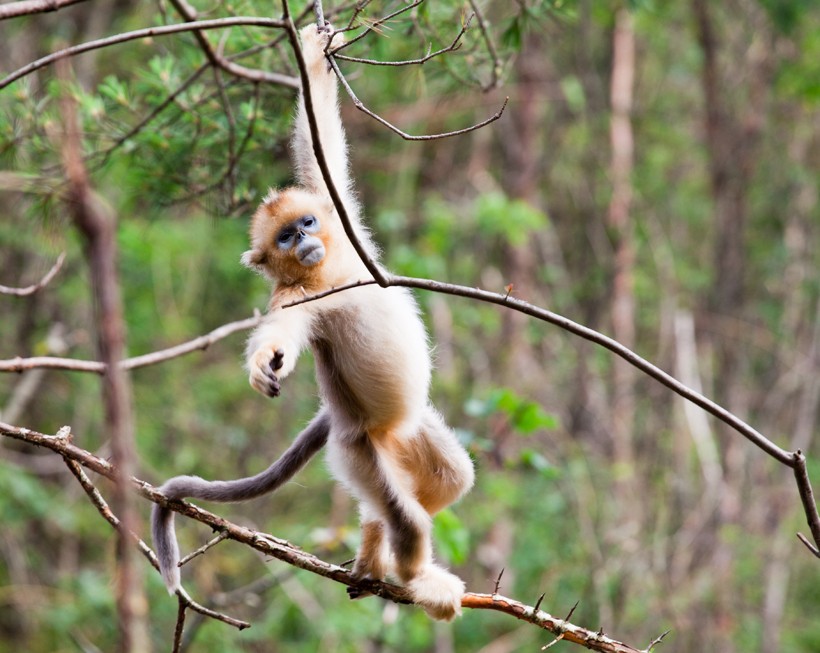
With their strong legs and arms, they spend most of the time up in the trees
?
Image credits: SINITAR/Shutterstock
Adult golden snub-nosed monkeys don’t have many predators due to their arboreal lifestyle. On the ground they are hunted by red dogs, wolves, Asiatic golden cat, fox, tiger and weasel. Human beings have hunted this monkey since ancient times, for its meat and fur. Their body part were once on high demand as they were thought to have medicinal values.
Young snub-nosed monkeys are often targeted by raptors like the northern goshawk and the golden eagle. When the group senses danger, young monkeys are taken by their mothers to the centre core of the group while the strong males move out to defend the attack. Under such circumstances, a male golden snub-nosed monkey can be highly aggressive. It uses its long canines and strong arms to defend its group against predators.
Reproduction and Life Cycle
Male golden snub-nosed monkey matures at the age of seven while the female matures early at the age of five. Mating behavior is observed throughout the year but most of the mating occurs between September and November months.
Females give birth mostly between March and May months of the year. The mating and birth months often shift according to their location and climate change.
Female golden snub-nosed monkeys have a gestation period of seven months. She gives birth to a single baby, which sleeps and feeds in her arms for the next few days.
Young baby golden snub-nosed monkeys do not wander away from the mother until they are more than 20 days old. After that, the young is free to socialise and meet members of its group. Monkeys strengthen their mutual bonds by grooming and sharing food with each other.
Behavior and Communication
Golden snub-nosed monkeys live in smaller groups of 10-20 members, which is a part of a larger band that is up to 600 members strong.
The group consists of juveniles, females and babies, guarded and led by a single dominant male. The dominant male holds mating rights and constantly expresses his dominance over other subadults of the group. The group maintains its hierarchy, where the dominant male is on top and the females with young ones take the next place. Juveniles and young males are on the lowest order of this hierarchy. Males that find difficulty in maintaining this order are often pushed out by the dominant male. Several such males form all-male units in order to socialise and survive.
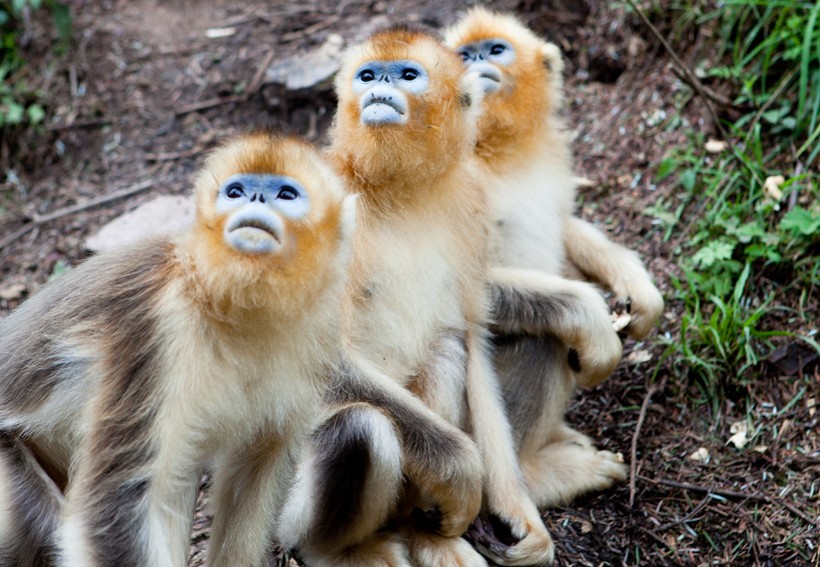
The exact reason behind their unique nose and facial features is unknown.
?
Image credits: SINITAR/Shutterstock
Snub-nosed monkeys are diurnal and are most active during the day. The daytime is divided between travel in search of food and rest.
The dominant male stays alert at all times and can be seeing wandering away from the rest of the groups when they rest. Females take care of the young ones together. Females have helpers and they take turns in feeding and taking care of the young ones.
During conflicts between neighbouring groups, females actively help the dominant male while the young ones are left with a helper at the centre of the group. At night, females and young ones of golden snub-nosed monkeys form “sleep clusters” by cuddling each other, while the males sleep separately. Females and young ones use each other in this manner to stay warm in the harsh chilly climate.
Golden snub-nosed monkeys live in large social groups and communicate with each other using voices and facial expressions. When agitated, the dominant male displays its canines to warn other males, while juveniles are often seen yawning when under stress.
Grooming sessions are held to express care and friendship. They display good levels of intelligence. Golden snub-nosed monkeys are animals capable of displaying anger or dominance amongst the group members. They take care of a wide territory of approximately 40sqkm and are well aware of different options for food available in it. They also change their eating habits according to seasons.
The well functioning group and its hierarchy are appropriate evidence that the golden snub-nosed monkey has superior levels of intelligence and communication skills.
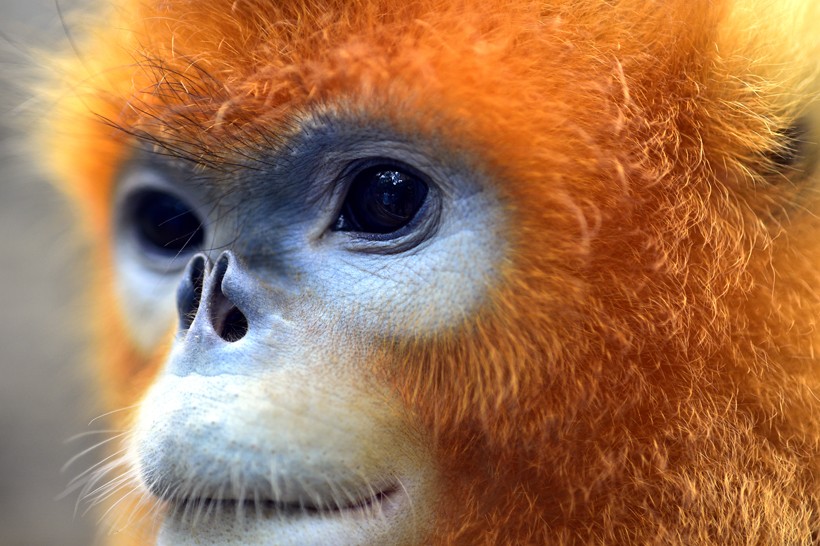
The face of the monkey is pale blue in colour.
?
Image credits: Wang LiQiang
Population
The population of golden snub-nosed monkeys is under threat of extinction due to increased habitat loss. Only a few survive in protect areas like the Foping National Natural Reserve, Shennongjia National Geopark, Baihe Nature Reserve and Wanglang National Natural Reserve.
Any international trade of the golden snub-nosed monkey is considered illegal. Many surveys are carried out to keep the population status and the number in check.
According to the estimates between 1995 and 2006, only 10,000 individuals of the Moupin golden snub-nosed monkey subspecies are left in the region of Sichuan. The population of the Qinling golden snub-nosed monkeys have been reduced to only around 4000 individuals. Hubei golden snub-nosed monkeys are already on the edge of extinction with only 1000-2000 individuals remaining in the Daba Mountains of Hubei.
Golden snub-nosed monkeys are pushed to very high altitudes due to deforestation and loss of habitat. Hunting for meat and illegal trade is also one of the major reasons for the dwindling numbers. These monkeys mainly depend on lichens that grow on dead plants for food. Dead plants are harvested at an industrial rate, which results in an immense scarcity of food for the golden snub-nosed monkey.
Again, due to loss of habitat, the territories of different groups begin to overlap and there is a constant struggle for survival between the groups. All the above reasons along with predation are the cause that the numbers of golden snub-nosed monkeys drop at an alarming rate. Many scientists speculate that the species may become extinct in the near future.
Evolution
The earliest known primate according to fossil evidence is the “Teilhardina” that existed around 55 million years ago, but based on other evidence scientists propose that the earliest primates would have existed as early as 88 million years ago in the Cretaceous era.
The land masses on earth in the Cretaceous era were quite different than the modern pattern. However, there is evidence that the earliest primates emerged on lands that would later form modern continent of Asia. Most modern primates show resemblance with the Teilhardina and it is also proposed that all modern primates evolved from this one ancestor species.
There are numerous theories on primate species evolution but not much is known about how primates migrated around the world.
Major changes in the climate during the ice age and major global warming might have been the primary reason behind the evolution of the golden snub-nosed monkeys. Their distinctive dietary habits and physical characteristics allow them to survive extremely cold temperatures that no other primates have evolved to withstand.
One of the primary reasons for these unique adaptations must have been the climate changes and tectonic shifts that occurred when India collided with the continent of Asia. The rising of the Tibetan plateau caused a rapid drop in temperatures and the primates adapted to survive this change in weather. As a result of this, the golden snub-nosed monkey became endemic to a small region in China and also became the only primates in the world that can survive in such freezing temperatures.
The distinctive features like the snub nose and long guard hairs in golden snub-nosed monkeys might also have been the result of this dramatic drop in temperatures.
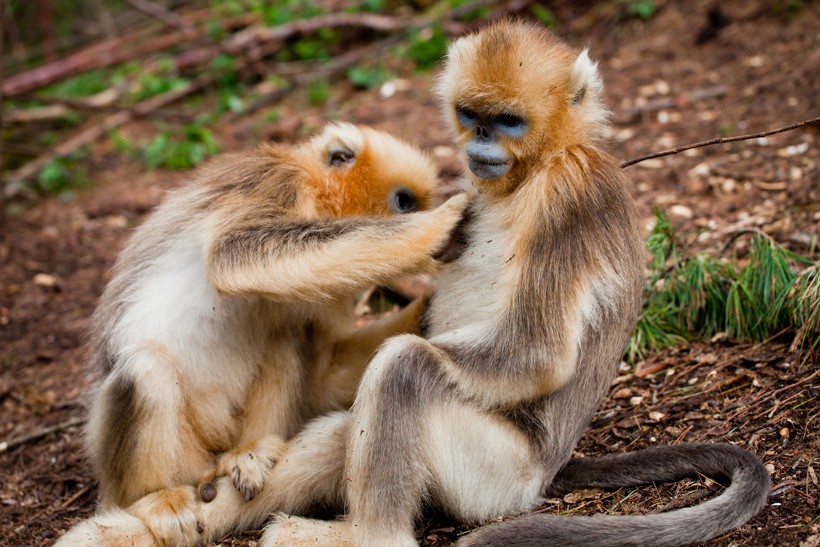
They have a thick padding in their tail that provide cushion when they sit.
?
Image credits: SINITAR/Shutterstock
Funfacts
- They are from a group called “old world monkeys”. These monkeys share common characteristics that separate them from modern monkeys. Old world monkeys have a thick padding in their tail that provide cushion when they sit. They cannot use their tails to hang from trees or to grab objects. Just like humans, their nostrils are close to each other.
- Golden snub-nosed monkeys are found only in Central and Southwest China.
- Chinese myth describes about a monkey warrior named Sun Wukong. He was born from stone and achieved many super natural powers through Taoist practices. He could transform each of his golden hair into a clone of himself, to turn the tables during a battle. Due to his physical features like golden hair, small nose, jade face and agility, many believe that the character Sun Wukong was inspired by the real-life golden snub-nosed monkeys found in Sichuan and neighbouring forests.
- Their bands can consist of up to 600 monkeys.
- Their face is pale blue in colour.
- No one knows the exact reason behind their unique nose and facial features.
